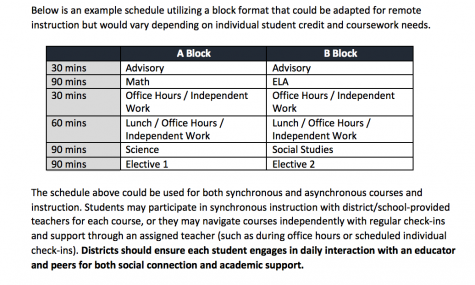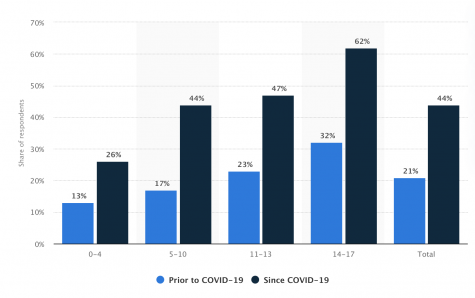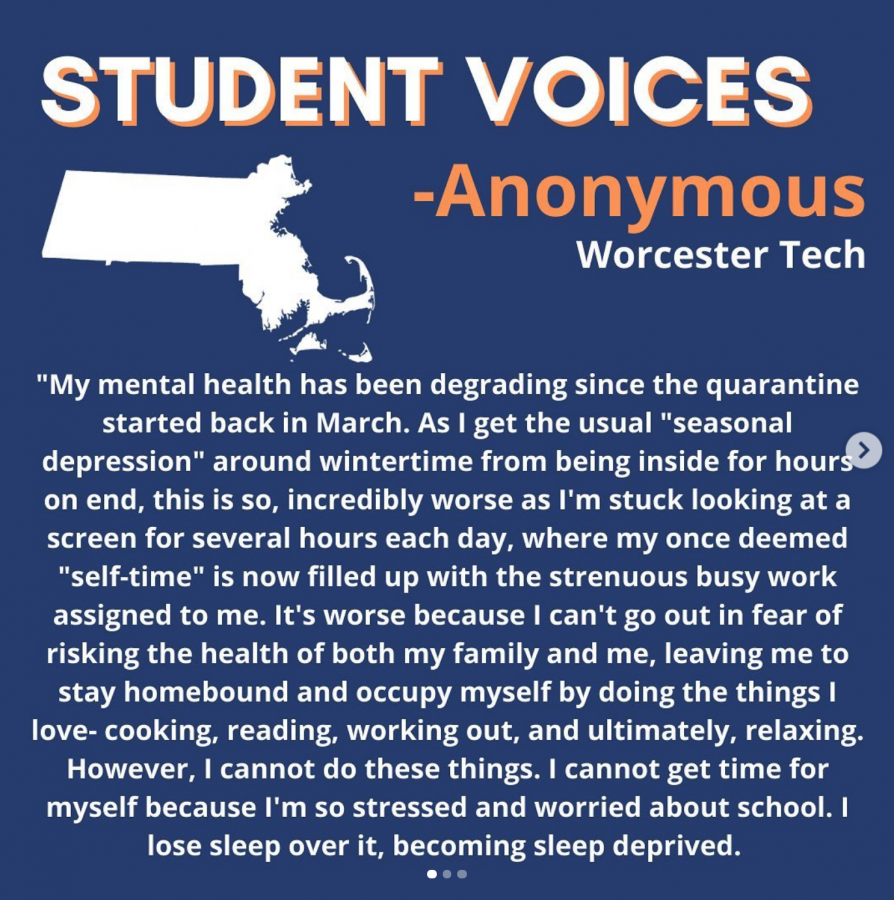Adding on the hours II: Modified learning model sparks controversy
This story is the second part in a series detailing DESE's new instruction-delivery requirements, why WPS is working to comply with such modifications, and community reactions to this mandate.
January 7, 2021
Following the decision of the MA Department of Elementary and Secondary Education (DESE) to increase synchronous learning time requirements, Westford Academy remains split in its reception of this mandate. Now that all teachers will be expected to combine their pods for afternoon live sessions, both teachers and students alike have mixed feelings about the feasibility of the updated learning model.
While the WPS agrees that the current hybrid model is not perfect for all families, Superintendent Bill Olsen and Assistant Superintendent Kerry Clery believe that it accomplishes the district’s goal of providing an equitable learning environment while taking into consideration any external stressors students and faculty may be facing due to the pandemic.
“While this current model doesn’t work for everybody, we do feel as though we found a balance in developing the original model. And now that people have kind of gotten their schedules structured, because we know that that was very difficult for families at the beginning, we are not looking to make any major changes but certainly need to make steps toward meeting those extra hours,” Olsen said.

For some such as history teacher Laine Winokur, the new model will reinforce the positive aspects of the current model. Winokur believes as though increased in-class instruction time will help build trust within the classroom. Not only will students be able to cover more content, they will also be able to engage in thoughtful discussion more often.
“I used to do Socratic Seminars with my classes all the time, which are an incredible way of exploring a topic and teaching academic risk-taking; unfortunately, I just haven’t been able to figure out a way to make this happen this year on top of everything else. I also constantly worry whether or not my AP US History students will be prepared to take the Exam in the spring [in the current model],” Winokur said.
Echoing these ideas, RLA freshman Srunu Bhagavathula believes as though more in-person time will give students more opportunities to reach out to their teachers regarding any questions and concerns they may have, which was not always possible during asynchronous times. In the revised learning model, students will be able to master more content through discussions and teacher meetings.
“I believe that the interaction with the teachers and the asynchronous work time in the current model make a positive impact by making the time to complete work and reviewing anything that we did not understand in class,” Bhagavathula said.
However, high school teachers such as Winokur believe as though content coverage should not be the main focus of this year due to the ongoing COVID-19 pandemic and the uncertainty and instability this has caused for individuals.
“If we reduce the amount of asynchronous work, I think we may be able to do a better job at covering content, though my history classes are surprisingly only one to two units behind where we would be in a ‘normal’ year. However, I do worry that focusing on content and coverage is not the right goal for this year. I think for some students reducing the asynchronous work will help their mental health, while for others it might be much worse,” Winokur said.
In addition, some students believe as though cutting back on asynchronous work time will be detrimental to students’ mental health. Student School Committee Representative Hannah Macey and some individuals of the Massachusetts Student Government Organization believe as though the new model may cause adverse health effects due to prolonged screen time exposure, but students simply aren’t wired to do as much work on screens. Students may feel more fatigued and less productive in a new learning model that has more remote login time.
“It’s really difficult to engage in online classes for long periods of time and maintain focus. For the students who aren’t in person at a given week or RLA students, it’s a lot to ask for at home kids to be on Google Meets hours a day. Kids just aren’t built to learn like that or stare at screens,” Macey said.
Recent studies from October 2020 provide quantifiable evidence detailing the ramifications of prolonged screen time. Pediatric Researcher Rudolf F. Wagner’s 2020 study on the impact of increased screen time during a pandemic found that prolonged screen time from remote learning as well as inevitable recreational screen time can cause muscle pain and myopia. As of June 2020, 62 percent of parents to U.S. teens aged 14 to 17 years stated that their kids were spending more than four hours per day on electronic devices since the start of the COVID-19 pandemic. Only 32 percent responding parents stated that their teens had used electronic devices daily for more than four hours before the COVID-19 pandemic.
“When you use a computer, your distance and position don’t change, and your eyes are fixed on the screen. When you constantly focus on a particular distance; especially if you have an uncorrected refractive error, you probably will be focusing harder than you need to and for a prolonged period of time. This causes eye discomfort and muscle pain around the eyes and even myopia,” Wagner said.

Moreover, with a sizable amount of asynchronous learning time granted by the current hybrid model, students such as Macey also feel as though they are able to catch up on any work they have missed or simply spend more time delving into concepts they may have not understood the first time in class.
“Asynchronous work gives us a chance to refocus ourselves and practice skills in different areas like research, analysis, writing etc. It’s also good to have that time to catch up on work and homework and helps us stay slightly less overwhelmed,” Macey said.
Overall, although the current hybrid model does not meet DESE’s guidelines, some students and faculty feel as though the current system does meet their social-emotional and academic needs in the most effective manner.
Even though the 2020 to 2021 school year may be unique in its learning circumstances, the current model has given some students the opportunity to bolster their mental health in order to truly focus on their academic success. With a new model prioritizing synchronous learning however, the effects of this novel opportunity may be diminished at the high school level.
“I get more sleep, more time to do my work, more time to eat, and more time to spend on activities that boost my self esteem and hobbies that keep my mind healthy. I think this year really threw everyone off and we have all realized how important it is to focus on mental health to achieve academic success,” Macey said.
Update 1/8/21: This story was refocused to be the second part of a series detailing DESE’s modified instruction-delivery requirements. This piece focuses on community opinions only and does not detail reasons why the change was made. In order to gain a more complete understanding of the reasons behind WPS’s modified hybrid model, please visit part I of the series.
